There are 250 million cases of malaria each year, and effective medication is expensive and in short supply. Justine Davies explores possible solutions
There are 250 million cases of malaria each year, and effective medication is expensive and in short supply. Justine Davies explores possible solutions
Joseph, the driver and guide for our 2006 safari holiday in Southern Africa, had become increasingly unwell. His ever present look of fatigue had steadily worsened and he was shivering uncontrollably. He suspected malaria, but while I and the other western tourists thought it logical for him to quickly seek diagnosis and treatment, to Joseph it was not so simple. He explained that for native Africans like him, effective treatment for malaria costs nearly a day’s wage. Add to this the loss of a day’s work in travelling to the nearest medical facility, and his ability to feed his family would become increasingly marginal.

Joseph is not alone in his plight. According to the World Health Organization (WHO), half the world’s population are at risk of malaria, which causes nearly one million deaths per year - most of them in sub-Saharan Africa. Fortunately, artemisinin derivatives provide an effective alternative to older antimalarial medications, like chloroquine, which have been rendered ineffective by the spread of resistance. However, issues of cost, supply and strategies to prevent the spread of resistance to artemisinin derivatives mean that deploying these newer drugs is far from simple.
Artemisinin is a natural antimalarial, extracted from trichomes (small glandular structures) on the leaves of the sweet wormwood plant, Artemisia annua. Chinese herbalists have used these leaves since AD340, but it wasn’t until the Vietnam war that artemisinin was extracted for use in antimalarials. ’Nowadays artemisinin is usually extracted using petroleum ether or n -hexane,’ says Malcolm Cutler, managing director of FSC development services - a consulting company with expertise in malaria treatments. ’It is then purified and crystallised and subsequently processed synthetically under good manufacturing practice guidelines into a range of derivatives,’ he says. These derivatives include dihydroartemisinin, artesunate, artemether and arteether, which have all proven to be safe and effective in treating malaria. To provide leaves for this process A. annua is widely grown as a crop throughout Asia and Africa.
Overcoming resistance
At present, artemisinin derivatives are the only effective antimalarial treatments. Therefore, if the few strains of malaria that already show some resistance to artemisinin become widespread we are in deep trouble, Cutler says. To stymie the inevitable spread of resistance, artemisinin derivatives are combined with older antimalarials in artemisinin combination therapies (ACTs). Older antimalarials can still have some activity against resistant malaria parasites but this is often not enough to cure the disease, meaning that they are practically ineffective when used alone. When used in combination with artemisinin derivatives, however, they help to prevent resistance because the parasite is less able to develop resistance to a combination of drugs. While offering combination therapies is good in theory, in practice it is often fraught with logistical problems.
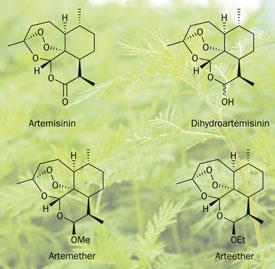
Cost has also limited the use of these lifesaving drugs; at more than 10 times the cost of chloroquine few native Africans can afford them. But this year the Global Fund partnership’s Affordable Medicines Facility - malaria (AMFm) initiative will start subsidising ACT production. This means that to patients like Joseph, ACTs will cost roughly the same as chloroquine.
While this is good news, ’the success of the AMFm initiative could lead to a big increase in demand for artemisinin’, says Jacques Pilloy from the ACT information service Artepal. Pilloy estimates that over the next two years there needs to be a 20 per cent increase in artemisinin production to meet demand - a potentially difficult task given that artemisinin is already in short supply. There is therefore an urgent need for more reliable, robust, high yielding A. annua plants.
Fast track production
Dianna Bowles, Ian Graham and their team at the Centre for Novel Agricultural Products (CNAP) at the University of York, UK, have been working towards this aim by producing the first genetic map of A. annua - showing the plant genes associated with traits like leafiness and artemisinin production. They have also created a fast track breeding programme for high quality plants.

The need to plot the map quickly meant that rather than looking at the genetic information for the whole plant, the team focused on the plant’s sites of artemisinin production. ’By focusing on trichomes, the only sites on the plant that actually make artemisinin, we are able to move more rapidly to understanding the genes that may control the production of artemisinin,’ Bowles explains.
The desired genes were identified by extracting messenger RNA (mRNA) from the trichomes and mixing it with reverse transcriptase to produce a complimentary DNA library. Comparing the differences in individual genes between plants allowed the identification of genes associated with useful traits such as high artemisinin production. Expressed sequence tags, designed to tag desirable genes, has meant that seedlings with these traits can be rapidly identified and used in breeding programmes.
The work to create this genetic map of the A. annua plant was funded by the Bill and Melinda Gates Foundation, and the results were recently been published in the journal Science .
Out of the laboratory
The Gates Foundation funding ’is targeted to the end point of the delivery of the charitable purpose’, explains Bowles. This means that scientists at CNAP have been able to take their research out of the lab and into the real world. The CNAP already used the slogan ’biology to benefit society’, but the A. annua project has helped cement Bowles’s belief that research can’t stop at the bench. ’You can’t just have one plant and say "there it is, it is someone else’s job to take this forward". What is great about the Gates Foundation funding is that it has made us totally face up to our responsibilities as scientists and ensure the results we have achieved become real products to help people,’ she says.
The genetic map has been made publicly available, allowing plant breeders throughout the world to identify beneficial genetic markers in their ownA. annua stock and tailor high yielding plants to local conditions.
CNAP have also used their knowledge to produce high yielding A. annua plants, which are currently undergoing field trials in Africa and Asia. Additionally, they have been liaising with people involved in each step of the ACT production pipeline.
From farmer to pharma
Discussions with pharma companies, who produce ACTs, are necessary to ensure their confidence in the quality of artemisinin from CNAP’s new high yielding plant varieties. But of equal importance are discussions with growers of A. annua and the teams who extract the artemisinin from the plants. Most growers are small scale farmers, many with as little as half a hectare of land, and if they can’t make a living from A. annua they will switch to more profitable plants. This, says Cutler, is ’a real problem at the moment, as the recent increase in food prices means farmers can get more money from other crops’.
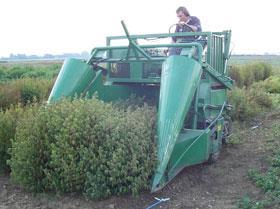
Higher yielding plants will encourage farmers to plant A. annua. ’If a farmer can get more money per hectare, he will be happy, and if the extractor can buy that crop at a lower price per kg he will also be happy,’ says Cutler. Bowles agrees, saying that her visits to field sites in the developing world have ’totally confirmed her in the view that the new crops must benefit farmers’.
Involving established farmers and extractors in CNAP’s field trials means that they can readily see that CNAP’s plants should make an economically viable crop. Also, extractors effectively act as the go-between for pharma companies and farmers. So, by liaising with extractors who only supply pharma companies producing mixed therapies, CNAP hopes to ensure that the artemisinin from their new varieties will not go into resistance-promoting single therapies.
Other growth areas
It will be 2012 before CNAP’s varieties enter full scale commercial roll-out, but the yield from A. annua plants has also steadily increased through the use of more traditional breeding methods. At the end of last year the National Institute of Agricultural Botany (NIAB) in Cambridge, UK, announced that they had bred plants with 2.2 per cent artemisinin per unit dry leaf. Although seeds from these plants are not yet commercially available, other plants from their breeding programme, which have a 1.7-1.8 per cent yield, are currently being used in the artemisinin supply chain. The yield from these plants ’is significantly greater than much of the crop in general usage, which only has a yield of around 0.85 per cent’, explains Steven Bentley, NIAB’s non-food crops project manager.
NIAB are also working towards a more efficient extraction process. ’It is widely known that poor recoveries of the artemisinin, often 45 per cent or less, are being obtained by most processors using conventional liquid solvent extraction,’ explains Ian Flockhart, who works with NIAB on artemisinin extraction. Flockhart has been investigating the use of alternative, cleaner, solvents such as supercritical CO2 and HFC-134a. Using these solvents, ’we have been able to produce useful concentrates of artemisinin, substantially free from interfering components and which have lent themselves to conventional recrystallisation to yield 90-95 per cent pure artemisinin in two simple extraction stages. Yields of artemisinin are approaching 75 per cent from the biomass, at this preliminary stage of the work,’ he says.
Planning for a rainy day
Currently, plants are the only source of commercially available artemisinin, leaving the supply of this life-saving drug in the hands of the elements. ’Last year’s very wet conditions and an earthquake in the region in China where most of the A. annua is grown are likely to have an impact on artemisinin availability,’ explains Ian Bathurst, director of drug discovery and technology of MMV (Medicines for Malaria Venture), a not-for-profit partnership for advancing malaria treatments. For this reason, alternative production sources of artemisinin and its derivatives are a must. ’If you can produce it in microorganisms or fully synthetically you can supplement the plant production taking the peaks and troughs out of the supply chain,’ he says.
Kay Monroe from the Institute for OneWorld Health - partners with Amyris, the University of California, Berkeley, US, and Sanofi-Aventis in the production of semi-synthetic artemisinin - explains that the production route they are developing is a two-step process. ’Artemisinic acid is produced by fermentation and then converted to artemisinin by a photochemical process,’ Monroe says. The fermentation stage that uses genetically modified yeast is currently being scaled up to industrial levels, and the development of the photochemistry cell is at the pilot stage. Artemisinin is then converted to its derivatives using the standard, synthetic routes.
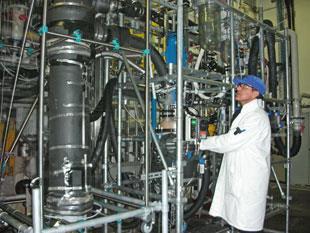
The semi-synthetic artemisinin derivatives are expected to enter the supply chain in 2012, and in accordance with WHO recommendations all of them will go into ACTs, says Monroe. ’Sanofi only produces ACTs for the treatment of malaria and will utilise the semi-synthetic artemisinin they manufacture in those ACTs.’
Fully synthetic artemisinin-like compounds are also being developed by MMV. Artemisinin’s antimalarial activity relies on a reactive peroxide bond, and MMV’s development of a fully synthetic compound has focused on replicating this activity by designing a molecule with a similar peroxide functional group. ’Our initial compound has now been taken over by the Indian drug company, Ranbaxy, and the drug is now in Phase III clinical trials,’ says Bathurst. They also have a back up compound due to begin Phase II clinical trials next year.
For growers of A. annua, the up and coming lab methods of production must be worrying. ’In the beginning the growers were very nervous about the new products being researched because they were afraid of losing their livelihood,’ says Monroe. However, representatives from CNAP, MMV and OneWorld Health regularly meet with growers at conferences to keep them informed about their research. ’We became more transparent about the actual technology, how it would enter the market place and how sensitive we are to pricing and their ability to stay competitive,’ explains Monroe, and as a result the growers’ response changed and became more positive.
Bathurst explains that the prime aim of the semi- and fully synthetic products ’is to smooth out the flow, so you don’t suddenly have a whole load of artemisinin available from China after a good harvest and then a dearth in supply if there is a natural disaster’. He believes that alternative production methods may eventually provide as much as 40 per cent of the artemisinin supply.
Back into the future
While the effort to increase supplies of artemisinin is proving successful, scientists aren’t yet able to hang up their lab coats and congratulate themselves on a job well done as there is a big storm looming - the spread of resistance to artemisinin and therefore the ACTs. To prepare for this inevitability, MMV have recently teamed up with pharma companies (including Novartis and GlaxoSmithKline) to screen millions of compounds in their chemical libraries in an effort to discover alternative antimalarial compounds.
In 2006, Joseph was fortunate; his Land Rover full of tourists insisted that part of their holiday would be well spent travelling with him to the medical centre to get a proper diagnosis and treatment - he recovered quickly and returned to his role as our excellent tour guide.
Nowadays, the continued and collaborative effort of scientists means that cheap ACTs will soon be available to all malaria sufferers, even the poor ones like Joseph, and when the inevitable resistance spreads a cheap alternative will - fingers crossed - be there to take its place.
Justine Davies is a freelance journalist based in Angus, Scotland
Further Reading
Ian Graham et al, Science, 2010, 327, 328

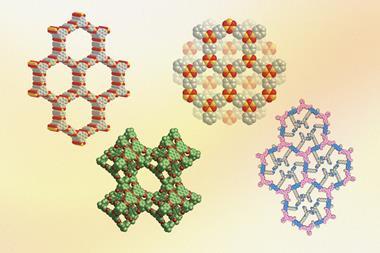
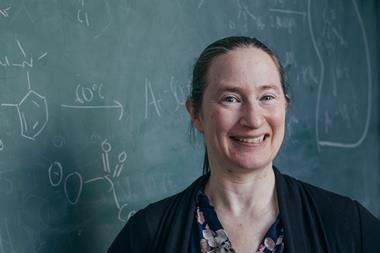
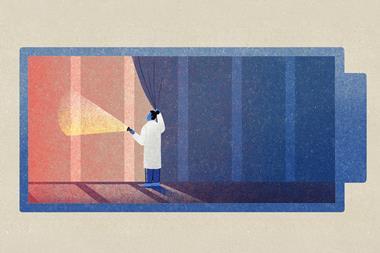



No comments yet